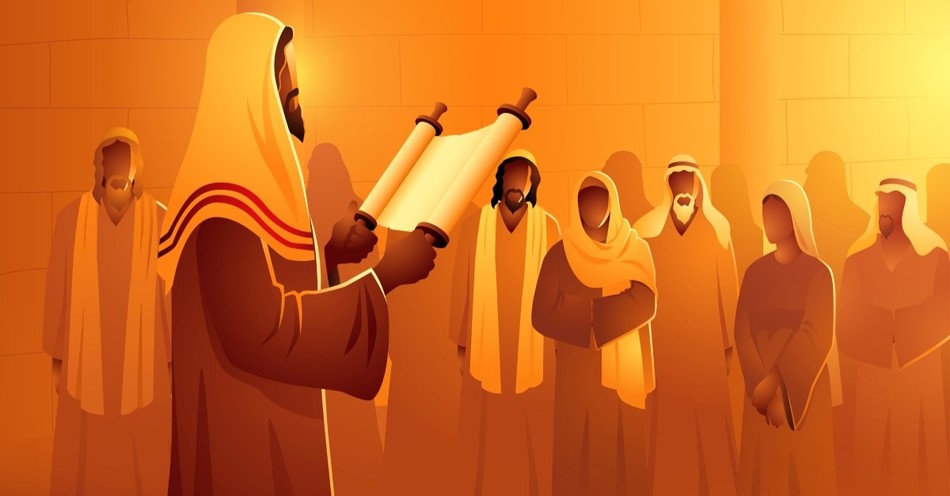The life of Christ changed everything. The Son of God entered this broken world to declare God’s will and plan to reconcile all creation back to the Father through the Lord Jesus Christ.
Many of the narratives about Jesus seem fantastical. He was born of a virgin. He performed radical miracles—the blind could see, the deaf could hear, and the dead were raised to life. Although unjustly imprisoned and horribly executed on the cross, he rose again three days later.
These aren’t myths or fables, however. These supernatural events occurred within a historical reality. The Gospel writers mention dates, places, and people to ground us in this world, giving a historical context to the narrative. Scholars can (and have) researched and affirmed these places and people existed.
One such person is Annas, who served as high priest and was an important figure at the time of Jesus’ death. Annas is mentioned specifically, and his actions and choices are important parts of the story around the trial and death of Jesus.
When Was Annas Appointed High Priest?
Annas, also known as Ananus, was appointed the high priest in Jerusalem. Scholars debate the exact date he gained this position. It is generally believed that Annas became high priest around 6 AD and served through 15 AD.
Annas came from a prominent priestly family, and his appointment marked the continuation of a dynasty of priests who held important influence in Jerusalem. According to records, Annas was the son-in-law of another high priest, Seth, and Annas took on the role after his father-in-law’s death.
During Annas’ time as high priest, the region of Judea was under Roman rule. The Romans appointed and controlled the high priesthood, often leading to corruption and power abuse. While it was part of Jewish tradition to keep the priesthood within family lines, Annas’ appointment was also likely due to his family’s ability to navigate Roman politics.
Along with dealing with the trial of Jesus the night of Christ’s death, Annas’ tenure as high priest coincided with several significant events in Jewish history, including the rise of the Zealots, a Jewish political movement seeking independence from Roman rule. The Zealots often clashed with the Roman authorities, increasing tension and unrest in the region. One of Jesus’ twelve main disciples was Simon, the Zealot.
Annas also had to deal with divided religious sects—the Pharisees and Sadducees, two different perspectives that Jesus also had to confront during his ministry.
Extrabiblical sources only give a few further specifics about Annas’ life. Beyond the simple records of his tenure, we get the most detail from the Gospels and the Acts of the Apostles.
After his formal term as high priest ended, Annas’ family continued to wield significant power in Jerusalem. Several of his sons and other relatives held the office of high priest in subsequent years, maintaining the family’s influence over Jewish religious life.
Who Were Annas’ Relatives in the Priesthood?
Eleazar was Annas’ father. He was a respected and influential priesthood figure known for his wisdom and leadership. Eleazar’s position and reputation likely contributed to the rise of the Annas family’s influence in Jewish religious circles.
Annas had a brother, Jonathan, who also held the office of high priest and was a powerful figure in Jerusalem during the Roman occupation. Jonathan’s tenure as high priest overlapped with that of his brother Annas.
Annas had two sons who held the office of high priest—Alexander and Ananias. While their exact tenure is debated and not well-documented, both played roles in the priestly dynasty and, by extension, the religious and political affairs of the time.
Most notably, high priest Caiaphas was Annas’ son-in-law. He married Annas’ daughter and succeeded him in the office. Caiaphas is best known for his involvement in the trial and crucifixion of Jesus. Caiaphas was technically the high priest when Jesus was brought before the Sanhedrin and sentenced to death.
The situation described by the Bible seems more complicated, as Annas is also called a high priest and exerts great power and influence over the trial of Jesus. In the tense relationship between Judea and Rome, this would make sense.
Conquered areas of Rome were required to worship Roman gods—notably the Emperor himself, to some degree. As cultures were polytheistic, adding one more person or other deities to worship might be oppressive to some degree but not out of the realm of possibility. The Jews were monotheistic and refused to bow to any person or other gods, and after a great deal of violent conflict, Rome allowed the Jews an exception.
Between the Zealots and the rise of a person claiming to be a divine being (Jesus), someone who may compete with the Emperor, Annas and his family would have been greatly concerned about the times. Whatever Jesus did could affect their political position with both the Jews and Rome. Since his son-in-law and both sons became high priest, Annas still wielded a great deal of influence, possibly even controlling the whole priesthood from behind the scenes and through his family.
Jesus enters this complicated and complex political and religious landscape when he is sentenced to death in the middle of the night.
Why Is Jesus Being Tried at Annas’ House Important?
Although Annas was not the official high priest then, his influence and familial connections within the priesthood played a crucial role in shaping the events that unfolded. Jesus was brought to Annas’ house in the middle of the night for his trial before the Jewish religious leadership.
This is partly understandable. While Annas didn’t hold the high priest position at the time, it was common for important cases to be brought before other influential members of the priesthood, such as former high priests or those with close ties to the ruling elite, especially in a case they thought would cause an uprising and challenge Rome. Bringing Jesus to Annas reveals how serious they thought this was, since he was likely the figure with the most experience and influence.
At the same time, the interrogation at Annas’ house is full of injustice and legal issues. Annas wasn’t the high priest, so he lacked the proper legal authority. No formal charge was brought against him, and the trial lacked the presence of witnesses or evidence to substantiate the accusations made against him. According to Jewish law, trials required the presence of witnesses to establish guilt, especially to execute someone.
Related to the lack of witnesses, in Jewish law, individuals were entitled to legal representation and the opportunity to present a defense. However, Jesus was questioned and interrogated without any such representation, which undermined the fairness of the trial. Jesus also faced coercive interrogation tactics aimed at incriminating him—actions aimed at obtaining self-incriminating statements rather than seeking the truth.
Added to the tense situation under Rome and the desire to maintain political and religious power, Annas and the religious elite had been criticized by Jesus on numerous occasions and clearly had a bias against him.
Most notably, they held the interrogation at night, in secret. This violated Jewish legal norms, as trials were supposed to be conducted publicly during daylight hours, allowing for transparency and accountability. The secretive nature is a characteristic of evil intent, not people vying for God and the truth (Proverbs 4:16).
The Gospel writers make a point to show us how unjust the whole process was, which was an indictment against the Jewish leadership and the old system. The Old Testament is clear on how God is a being of righteousness and justice (Psalm 89:14) and how God hates injustice (Proverbs 6:16-19)
Where Does Annas Appear After the Gospels?
After his appearance in the Gospels, Annas continued to exert influence in Jewish and political circles.
Annas is mentioned in the Book of Acts, which chronicles the church’s early history. In Acts 4:6-22, Annas is listed alongside Caiaphas as one of the high priests who confront Peter and John after they perform a miraculous healing. The family of Annas is mentioned, along with his son, Alexander. After Peter and John healed a paralyzed man, the group questioned Peter and John, specifically asking by what power they performed the miracles. Peter was “filled with the Holy Spirit” and responded with how the living Christ had given them power—the same Jesus they unjustly crucified. Annas, Caiaphas, and others instruct Peter and John to stop preaching about Jesus.
The two leading apostles, however, make it clear they will obey God rather than men.
Annas is mentioned in historical accounts outside the biblical text, providing further insights into his activities. For instance, the Jewish historian Josephus references Annas and his involvement in political and religious affairs during the first century AD. According to Josephus, Annas played a role in appointing and removing high priests, illustrating his continued influence and power.
What Lessons Can We Learn from Jesus’ Trial at the House of Annas?
The trial of Jesus at Annas’ house provides valuable lessons that can resonate with us today. Here are some key lessons we can learn from this event.
1. Upholding Justice and Fairness. Jesus’ trial reminds us of the importance of upholding justice and fairness in legal proceedings and the evil and sin of injustice. Procedural irregularities, bias, and a lack of due process marked the trial at Annas’ house. It serves as a reminder that everyone deserves a fair and impartial trial, regardless of their social status or perceived threat.
2. The Danger of Power and Influence. As a former high priest with strong connections, Annas wielded significant authority within the religious establishment. However, this power was misused to pursue personal and political agendas, leading to an unjust trial. It reminds us to be cautious of the potential for corruption when power is concentrated in the hands of a few.
3. Standing Firm in the Face of Injustice. Despite facing unjust treatment, Jesus maintained His composure and spoke the truth. His example encourages us to remain steadfast in our convictions and speak out against injustice, even in the face of adversity.
4. The Consequences of Fear of Men. The religious leaders and other participants succumbed to the fear of losing their authority or facing the disapproval of their peers, leading them to act unjustly. This serves as a reminder for us to examine our own actions and motivations, ensuring that we are not driven by fear or the desire for social approval.
5. The Transformative Power of Forgiveness. Despite the injustice of His trial, Jesus exemplified forgiveness and love. His response to those who persecuted Him was one of grace and compassion. This teaches us the transformative power of forgiveness, even in the face of profound injustice. It challenges us to extend forgiveness and seek reconciliation, promoting healing and unity in our relationships and communities.
Let us learn from Annas and Christ, a contrast of two men and their dealings with power and influence. Annas allowed fear, power, and greed to lead him to injustice and evil, even when the God he claimed to worship and serve stood right before him.
God, help us be like Christ, who had all power and authority, yet gave his life for truth and stood against all sin and oppression, defeating injustice and evil through obeying his Father and loving all in truth. This is how he overcame. So will we, his followers.
Peace.
Photo Credit: © Getty Images/ rudall30

This article is part of our People of Christianity catalog that features the stories, meaning, and significance of well-known people from the Bible and history. Here are some of the most popular articles for knowing important figures in Christianity:
How Did the Apostle Paul Die?
Who are the Nicolaitans in Revelation?
Who Was Deborah in the Bible?
Who Was Moses in the Bible?
King Solomon's Story in the Bible
Who Was Lot's Wife in the Bible?
Who Was Jezebel in the Bible?
Who Was the Prodigal Son?


.jpg)
